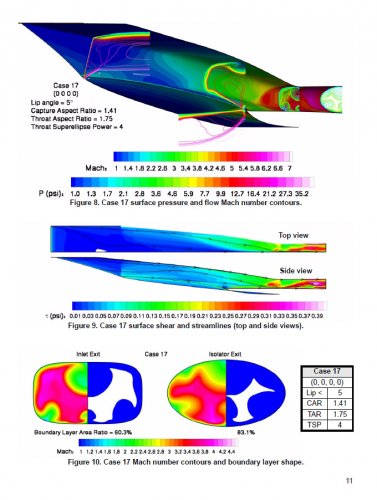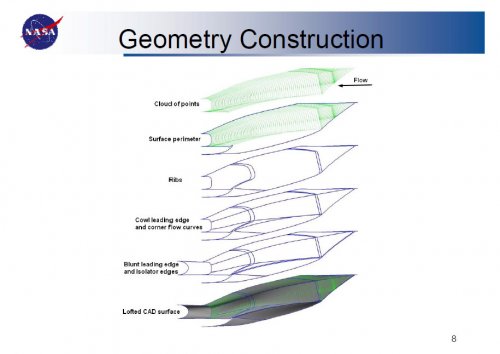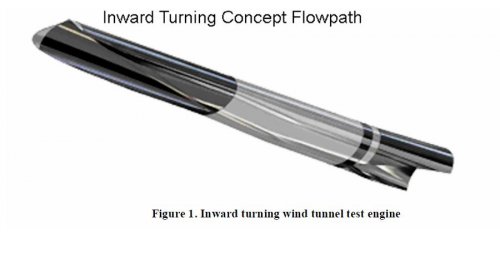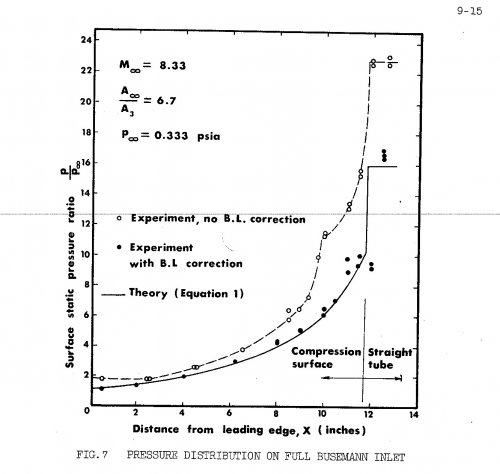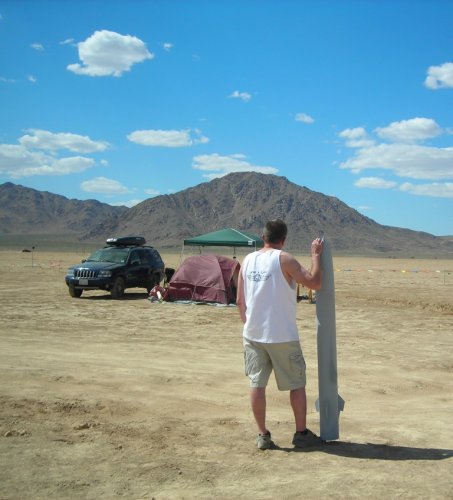RanulfC said:
shockonlip said:
airrocket said:
My interest of late has shifted more towards the FDL7 SW deeply cooled rocket with the retractable inward inlet. It is a very unique design in the way it varies capture area and short inlet flow path. The RPV model is on my work bench at this time. Powered by SF ducted rocket. I like the FDL-7 inlet as it is retractable to reduce drag and clean-up the lower fuselage for glide and re-entry. Been awhile since I contacted Sannu if you a recent contact email PM me. Great Thread keep it going!!!!!
Regards,
As far as FDL7 based vehicle is concerned, something like this?
Interesting concept SOL, but I'm trying to get a mental picture of how you'd do a 'drop-down' inward-turning?
Randy
HA! At first I didn't know who SOL was !!

So I ran across this design drawing in a technical paper I looked at during the weekend.
It immediately reminded me of airrocket's earlier post. He's the one that is more up
on it than I, but I jotted down some ideas below.
So the first thing, assuming that the inlet worked in a certain Mach number range when it
was lowered. And the FDL-7's boundary layer was handled, etc.
There would be two aspects:
1. On ascent, retracting the inlet once you were no longer breathing air.
2. On descent, perhaps you want to lower the inlet to breath air (assuming you have
fuel remaining to do that). You may not need to lower the inlet if you have adequate
cross-range from gliding flight alone due to the reduced drag of the inlet being
retracted. That is a key point, and could be one of the main reasons the inlet is to
be retracted, namely cross-range on reentry.
For raising the inlet, there is the transient flow conditions (but I would suspect that
raising a inward turning inlet is like a fixed inward turning inlet, at a nonzero and varying
angle of attack - all inlets have to handle that - within limits of course), and the loads on
the mechanism that raises the inlet, and temperature issues caused by the flow, and the seals
to close off the inlet when it was raised. Also perhaps handling the heat of the inlet when it
is up inside the vehicle. I'm sure there are other aspects as well.
For lowering the inlet, there are transient flow conditions, and the loads, temperature issues,
and getting the inlet started, but then you can control at what Mach numbers you lower it.
So I'm not sure what aspect of this you are having a hard time visualizing.
Even a fixed inward turning inlet has to deal with off-axis flow (yaw, pitch, roll), within
certain limits of course. Outside those limits, the inlet isn't expected to function well.
The inward turning is a function of the inlet alone. There is no fuselage impact here,
except for the fuselage boundary layer, which does have to be dealt with, but I weaived
my hands in the air earlier saying I assumed we dealt with that in the design of the inlet
when it was lowered.
There are the nasty shock/boundary layer interactions we have to be careful of, but we'd
look at that stuff when we designed the inlet.
Maybe it would be a lot harder than we thought.
Did you want to explore these above kinds of issues, or were you thinking of something else?

